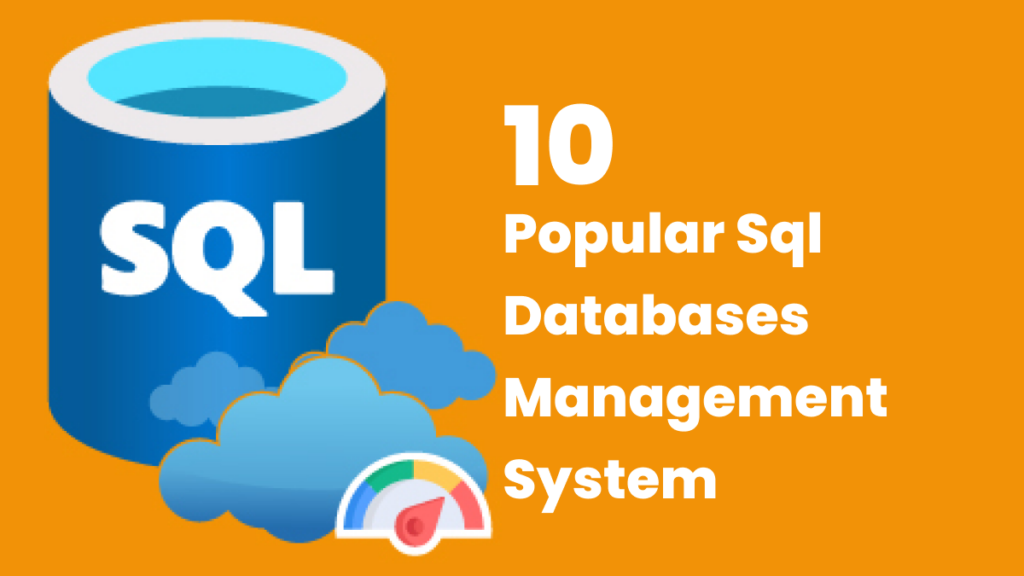Understanding SQL Databases
SQL Databases (Structured Query Language) serves as the universal language for managing relational databases. It enables users to interact with databases by executing queries for various operations such as data retrieval, insertion, deletion, and manipulation. SQL databases, also known as relational databases, organize data into structured tables, consisting of rows and columns, adhering to a predefined schema. This structured approach facilitates efficient data management and analysis, making SQL databases indispensable in the field of data science.
SQL Database Overview
SQL databases are characterized by their adherence to the principles of the relational model, which emphasize data integrity, consistency, and relational operations. These databases employ SQL as the primary means of querying and manipulating data, offering a standardized approach for interacting with database systems.
The relational model defines the following key concepts:
- Tables: Data is organized into tables, also referred to as relations, where each table represents a distinct entity or concept. Tables consist of rows and columns, with each row representing a unique record and each column representing a specific attribute or field.
- Schema: The structure of the database, including the arrangement of tables, their respective columns, and data types, is defined by the schema. The schema provides a blueprint for organizing and accessing data within the database.
- Constraints: Constraints enforce rules and conditions on the data stored in the database, ensuring data integrity and consistency. Common constraints include primary keys, foreign keys, unique constraints, and check constraints.
- Queries: SQL queries enable users to retrieve, manipulate, and analyze data stored in the database. Queries can perform operations such as selecting specific columns, filtering rows based on conditions, joining multiple tables, aggregating data, and sorting results.
- Transactions: Transactions represent a sequence of database operations that are executed as a single unit of work. Transactions ensure the atomicity, consistency, isolation, and durability (ACID) properties of database operations, thereby maintaining data integrity and reliability.
Google’s Gemini AI Image Generation Tool Temporarily Halted: What Caused The Setback?
Top 10 SQL Databases for Data Science
- PostgreSQL: PostgreSQL is a powerful open-source SQL database known for its scalability, extensibility, and rich feature set. It supports a wide range of data types, indexing techniques, and advanced SQL functionalities, making it well-suited for data science applications.
- Microsoft SQL Server: Developed by Microsoft, SQL Server is a comprehensive relational database management system (RDBMS) that offers robust features, scalability, and seamless integration with other Microsoft products. It provides extensive support for business intelligence and advanced analytics, making it a popular choice among data scientists.
- MySQL: MySQL is a widely-used open-source SQL database renowned for its performance, reliability, and ease of use. It is particularly well-suited for web applications and data-driven websites due to its scalability and compatibility with various programming languages.
- SQLite: SQLite is a lightweight, serverless SQL database engine that is embedded within applications. It is characterized by its simplicity, efficiency, and minimal setup requirements, making it an ideal choice for small to medium-sized data science projects.
- IBM Db2 Database: IBM Db2 is a powerful relational database management system known for its scalability, performance, and support for enterprise-level applications. It offers advanced analytics capabilities, high availability, and seamless integration with IBM’s ecosystem of tools and services.
- Oracle Database: Oracle Database is an enterprise-grade RDBMS renowned for its reliability, scalability, and comprehensive feature set. It provides robust support for complex data types, advanced SQL functionalities, and high-performance data processing, making it a preferred choice for data-intensive applications.
- Amazon Redshift: Amazon Redshift is a fully-managed cloud data warehouse service designed for large-scale analytics and data warehousing. It offers massively parallel processing (MPP), columnar storage, and advanced optimization techniques for querying and analyzing vast datasets, making it well-suited for data science workflows in the cloud.
- Amazon Relational Database Service (RDS): Amazon RDS is a managed database service that simplifies the deployment, management, and scaling of relational databases in the cloud. It supports multiple database engines, including MySQL, PostgreSQL, SQL Server, and Oracle, providing flexibility and ease of use for data science projects hosted on AWS.
- Amazon Aurora: Amazon Aurora is a fully-managed relational database engine compatible with MySQL and PostgreSQL. It offers high performance, scalability, and availability, with built-in features such as automated backups, replication, and fault tolerance, making it an attractive option for data-intensive applications on AWS.
- Cloud SQL: Cloud SQL is a fully-managed database service offered by Google Cloud Platform (GCP) for running SQL databases in the cloud. It supports MySQL, PostgreSQL, and SQL Server, providing high availability, automatic backups, and seamless integration with GCP services, making it an excellent choice for data science projects hosted on GCP.
In conclusion, SQL databases are essential components of data science workflows, providing a structured and efficient means of storing, managing, and analyzing data. The top 10 SQL databases outlined in this guide offer a diverse range of features, scalability options, and integration possibilities, catering to the varied needs of data scientists across different domains and industries. By leveraging the strengths of these SQL databases, data scientists can enhance their productivity, optimize data workflows, and derive actionable insights from complex datasets with confidence and efficiency.
